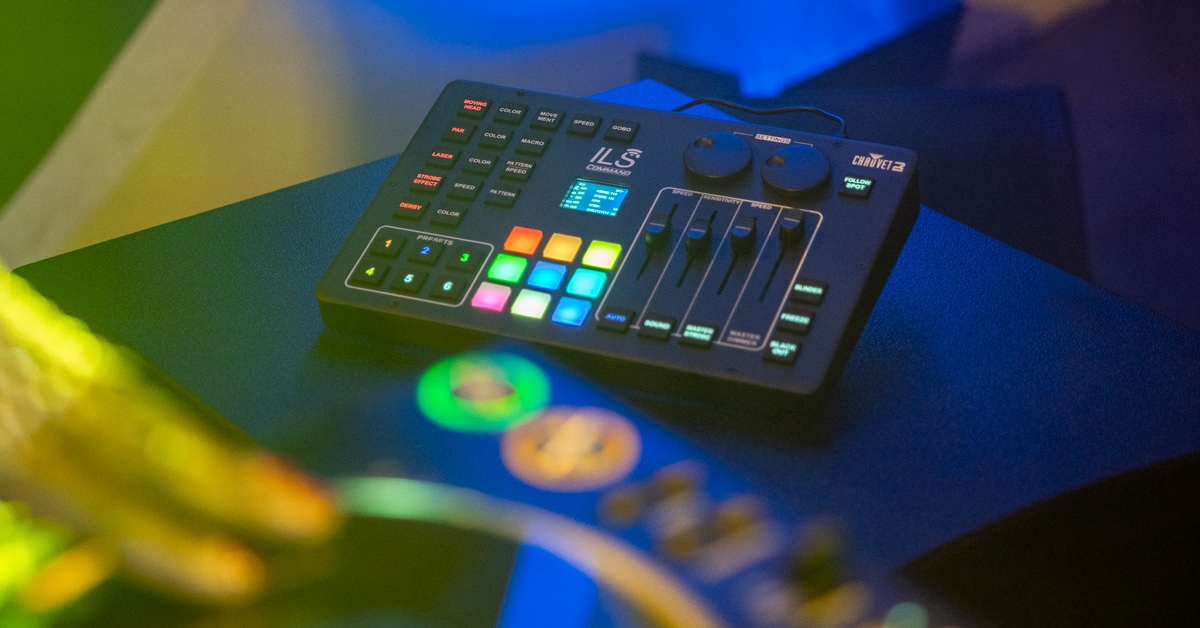CHAUVET DJ’s ILS technology—incorporated into a growing number of the company’s products that can be controlled by either the GigBAR Move + ILS, or the new ILS Command module—brings the ability to create coordinated, synchronized light shows to everyday musicians, DJs and event producers. Any artist looking to add impact and thrills to their live performances, but who doesn’t want to dig into conventional DMX lighting-control protocols—and the required cabling and setup time—will applaud the ease and intuitive operation of CHAUVET DJ wireless ILS systems. But ILS Command isn’t simply a pure technology evolution. It’s also a savvy operational tool forged by an experienced “team in the trenches,” populated by working musicians, producers, DJs, lightning designers, wedding and special event planners, and others.
Geoff Short is Product Education and Resource Manager for CHAUVET DJ. Describing himself as “deeply well-versed in the gig life,” Short has done tons of load-ins, load-outs, setups and teardowns, so he is very much aware of what musicians confront when operating lightshows in high-pressure, no-time environments. “It’s a joy to talk about this stuff and share it with other artists going through the same thing,” he says.
CHAUVET DJ rolled out the new Integrated Lighting System technology last summer with GigBAR Move + ILS. Was ILS Command being developed in parallel, from the beginning?
Geoff Short: We always knew that in addition to a pack-and-go system—such as GigBAR Move + ILS—an outboard hardware control would be a good option. We just weren't sure what form it would take, or when it would happen. We needed to introduce the technology first, before we explored different ways the technology could be controlled.
What have been your takeaways since the launch of ILS last year?
First, we need to look at why we introduced the technology in the first place. It was to be able to emulate a coordinated synchronized light show that looked like it was being created and controlled through DMX, but without using DMX. [Note: DMX stands for Digital Multiplex, which is a unidirectional lighting-control protocol for running complex lighting sequences from a single source.]Many people don't know DMX, and they don't have the time or bandwidth to learn about it, but they still want some level of synchronization and control in their lightshow. The ILS board is no more than a foot in length, it’s very light and it’s easy to use.

So, we defined the audience for ILS technology. It's not an advanced user who creates lightshows with multiple layers of control using DMX. Instead, ILS is for lighting novices and people who want to look like they're using DMX—which informed all of the gear that’s part of the ILS ecosystem.
Can you give us a practical benefit of that system integration?
A great example is an entertainment company that has multiple DJs, MCs, bands or techs out in the market every week. With ILS Command, you can just hand multiple units to your team and easily have controlled, synchronized lightshows at whatever events they're doing.
What was striking to me is the system is configured like an affordable MIDI controller. It’s non-intimidating.
Yes, and it’s that similarity with a compact MIDI controller that helps our target audience understand ILS. If someone is using a MIDI controller to create beats or something like that, the rubberized, backlit and colored preset pads are very familiar and comfortable to dive right in. The interface is going to feel very intuitive, so there’s not a steep learning curve.
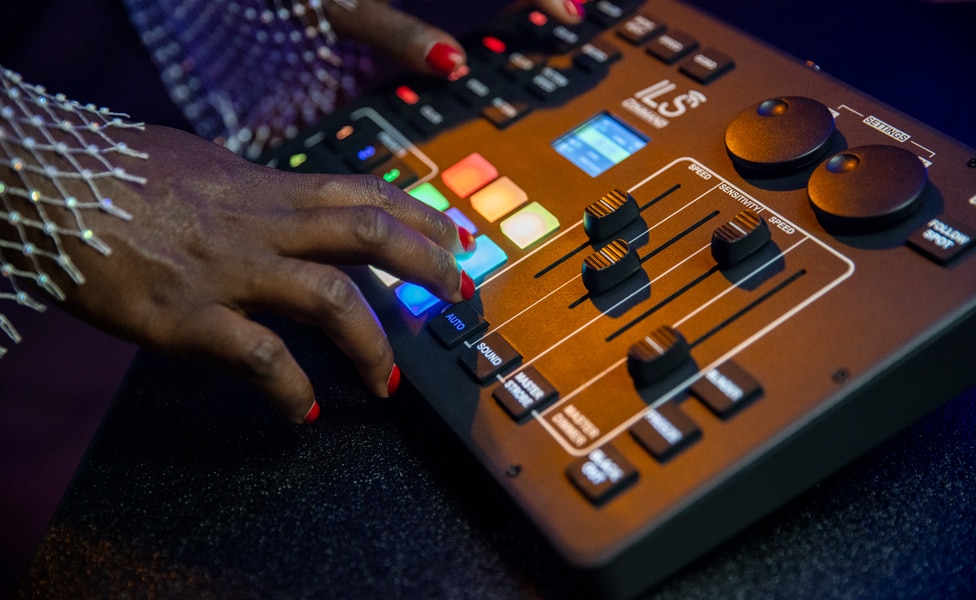
For someone new to the CHAUVET DJ world, can you break down automatic versus sound-activated mode?
Ease of use is at the top of the pyramid, so auto programs and sound-activation modes are standard in just about every product we have to accommodate users with a “set it and forget it" mentality. Depending on the specific fixture, you can select an auto program and move on. Auto programs vary from product to product and offer a series of pre- programmed looks. Those looks can be a solid color or a fade between colors. They can be a pulse or a rapid chase between colors. In addition, the speeds of those features can be varied from slow to fast. On ILS Command, there’s even a master speed fader for automatic mode, so it’s easy to vary the look. For example, when the dancing starts, you may want frenetic light movement. But you don’t want the same thing happening all night, as you reach the point of diminishing returns, where it's no longer having the desired effect. Sound-activation mode is just what it sounds like. A microphone in the product listens to the beat of whatever is happening in the room, and it triggers lights based on that pulse.
As you were envisioning your target customer while developing ILS Command, what were the must-haves versus the nice-to-haves?
Before ILS Command was even a thing, the brains of our Integrated Lighting System was the GigBAR Move + ILS. That unit has moving heads, hex-color parts, derby and laser effects, as well as bright strobes. The ability to select which of those effects you want to use at what point was critical, and that happened right out of the gate. Another piece of technology that came hand-in-hand with ILS was the introduction of RFC remotes, as opposed to standard infrared remotes. [Note: IR remotes require line-of-sight operation, while RF remotes use radio waves and can be used over longer distances, as well as work in situations where obstacles block line of sight.] The GigBAR Move + ILS now comes with its own RF remote.
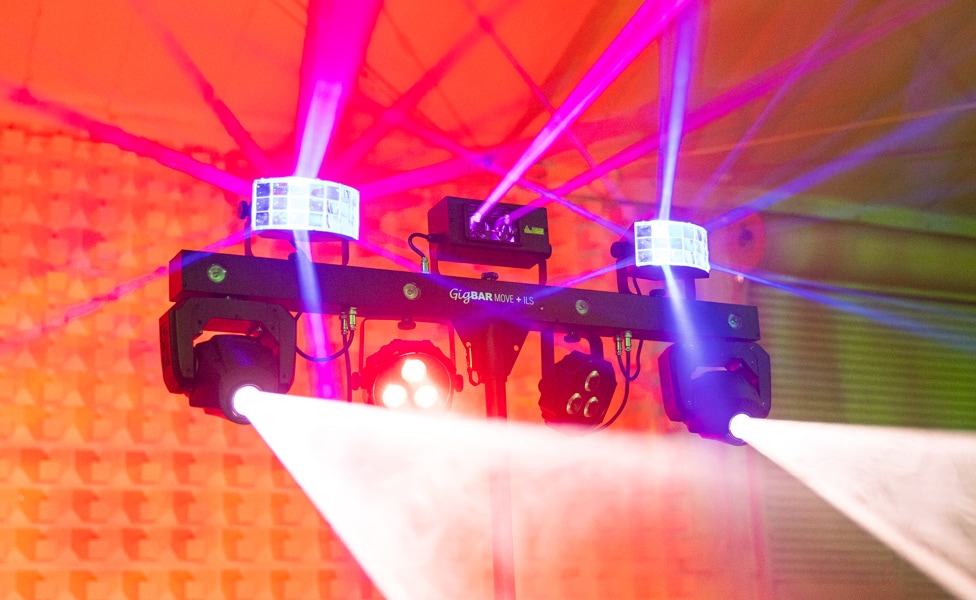
Additional must-haves were the ability to freeze all of the motion that's going on for any effect, the potential for an increased sound-activation mode, and quick blackout and blinder functions. Things like that are one-touch universal looks that need to happen quickly and easily. Whether it's a first dance at a wedding, or a band is leading into the chorus of a song, you need the lights to change at those moments.
The ILS Command and GigBAR Move + ILS also have D-fi wireless transmitters onboard.
Yes. D-fi is a very robust wireless signal that comes from the ILS Command and the GigBAR Move + ILS. It allows unobstructed operation up to about 600 feet, and it also helps save time during setup and teardown. Of course, they're conventional lights, so if you desire, you can certainly hardwire them to communicate the ILS signal that comes into one light and send it to other lights in the chain.
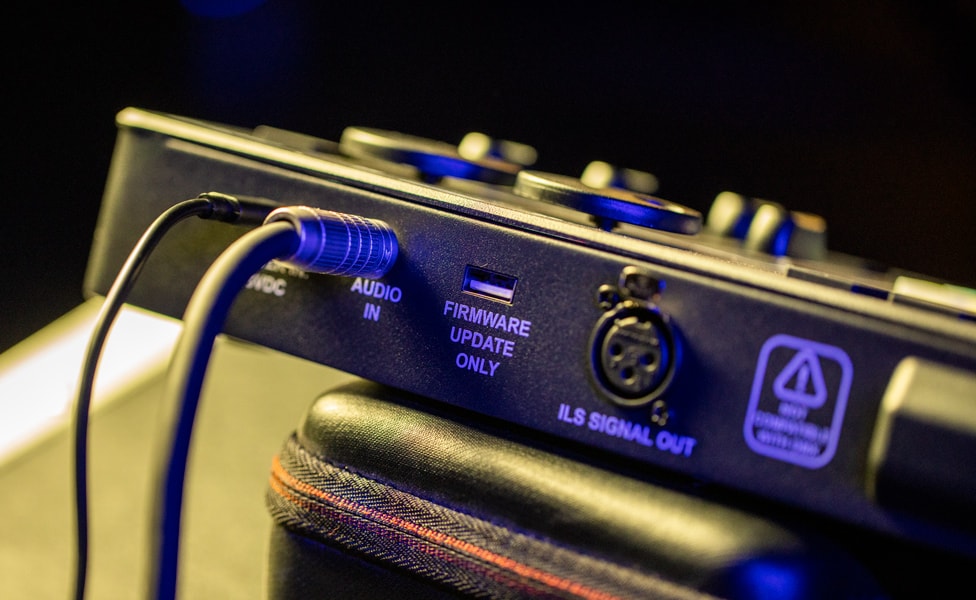
It's easy to get into the mindset of lighting for band and DJ performances, but the gig could also be a wedding, a bar mitzvah or a conference. Those situations can be very unpredictable—more so than a band running through a predetermined set—so it makes sense lighting changes must respond quickly in real time.
Absolutely. And that brings to mind another must-have. No matter what product we're developing or technology we're introducing, reliability is always at the top of the list. You can’t have things collapse at critical moments. At the very least, we want things to freeze where they are, as opposed to completely fail.
You're talking about fail safes...
That's right. In some situations, if a DMX signal is lost, the lights don't know what to do and they go crazy. But looking back before ILS to our Bluetooth line—which we introduced hand-in-hand with Guitar Center, by the way—if the Bluetooth signal was lost, the lights would just freeze until the connection was reestablished. We have those types of mindsets in our heads when developing this technology. It’s knowing what it’s like to be in those situations out in the field, and it’s also critical to follow the concept of the right tool for the right job. We spend a lot of time trying to define applications and situations for specific technologies, because something that might be great for a wedding may be different than what’s needed by a duo in a café.
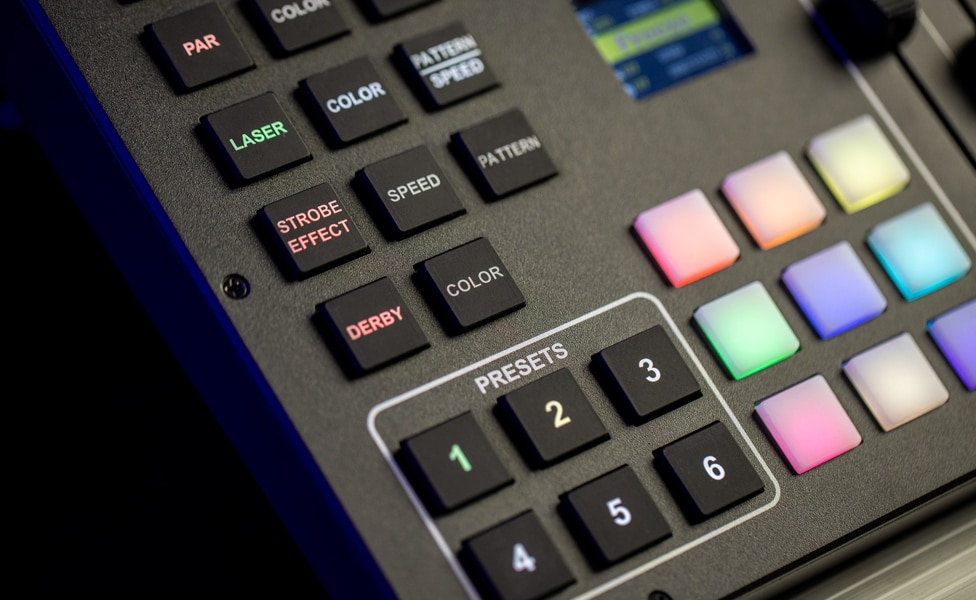
We’ve discussed a lot of mid- and high-level lighting control features. For new users looking to explore these systems, is there a quick sum-up of ILS and ILS Command?
The bottom line is the Integrated Lighting System is about the ability to create coordinated, synchronized lightshows without DMX. Whether you are a DMX expert, or have no interest in ever touching anything DMX, ILS is a great mid-level technology that can fill a lot of gaps in your lighting needs. It has harnessed lighting control in an easy and transportable way. Now, with the addition of ILS Command, the ways to control these systems give people even more options to harness this technology. I think most of the products in our line will become ILS-compatible at some point or another.
One more thing—do you plan to offer firmware updates?
Currently, some updates are meant to be strictly bug fixes or maintenance type of things. But keep in mind that ILS is still new. As more of the market gets their hands on it, and we gather feedback about their real-world use, we could add and evolve some really cool functions over time. I think there are exciting things to come.
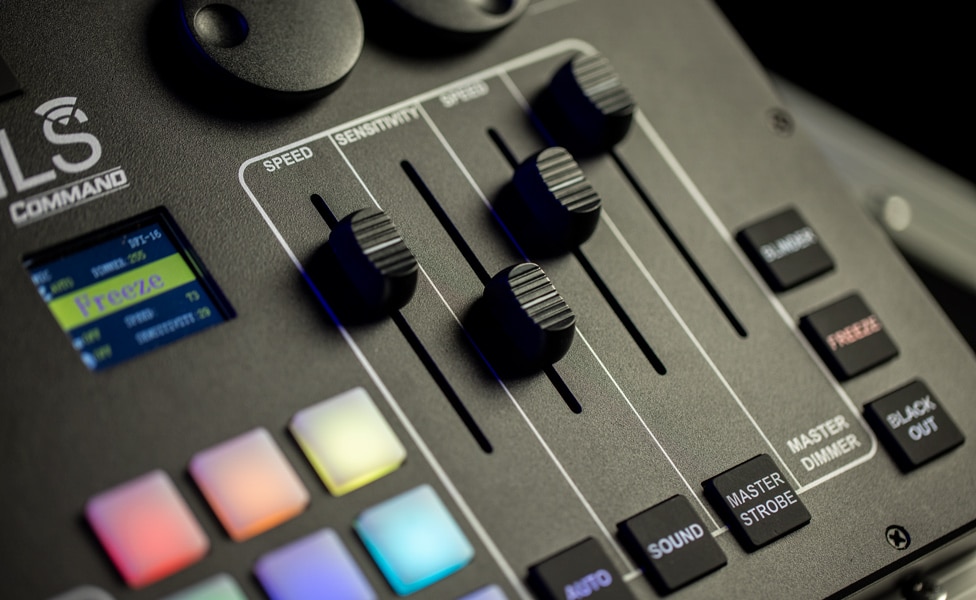
The bottom line is the Integrated Lighting System is about the ability to create coordinated, synchronized lightshows without DMX. Whether you are a DMX expert, or have no interest in ever touching anything DMX, ILS is a great mid-level technology that can fill a lot of gaps in your lighting needs. It has harnessed lighting control in an easy and transportable way. Now, with the addition of ILS Command, the ways to control these systems give people even more options to harness this technology. I think most of the products in our line will become ILS-compatible at some point or another.










